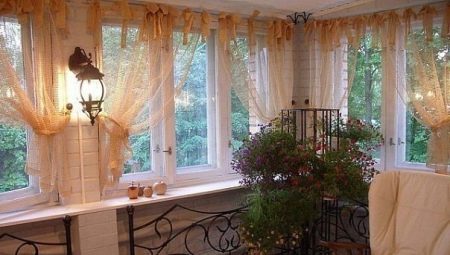Surely everyone will agree that the windows without tulle seem lonely, and the interior - unfinished. However, if we are used to curtaining all windows, sometimes we forget to pay due attention to the design of the curtains of the balcony or loggia. The material of this article will tell about what tulle curtains are and how they can be hung.
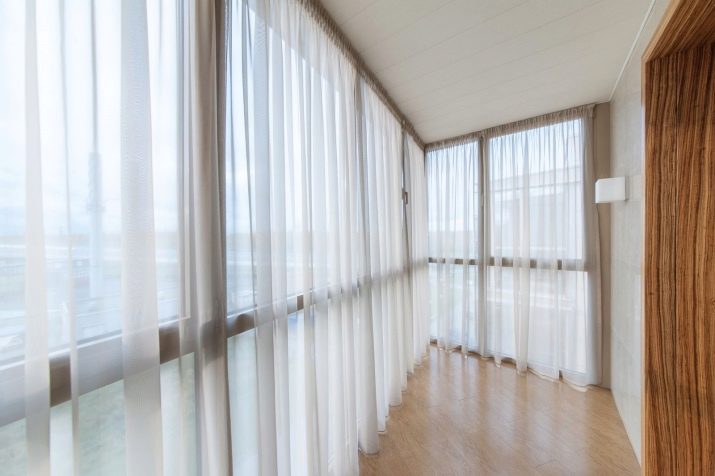
Primary requirements
Regardless of what type of canvas it is planned to hang on the windows of the balcony, the curtains must obey certain rules. For example, they:
- should not be too dense, significantly reducing the level of light flux coming from the street into the room;
- cannot be unnecessarily long, as this will re-read the safety standards of a person on the balcony;
- should be predominantly light, because dark ones instantly reduce the level of natural light in the room;
- must be practical and, if possible, resistant to ultraviolet radiation, otherwise they will quickly burn out;
- should not be too grandiose, given that the area of the balcony or loggia is limited;
- should provide convenient ways of opening and closing, although sometimes they can be stationary.
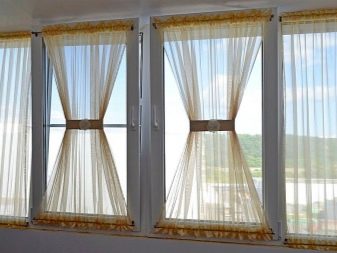
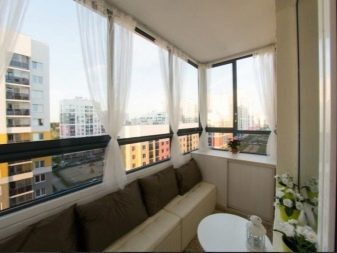
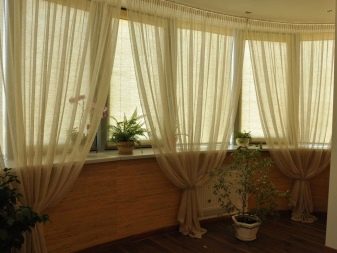

Varieties
Fashion trends of the new season suggest turning to tulle curtains of a very different cut. For example, products for decorating a balcony or loggia can be made in the form of:
- japanese panels (smooth type meter-wide models without folds);

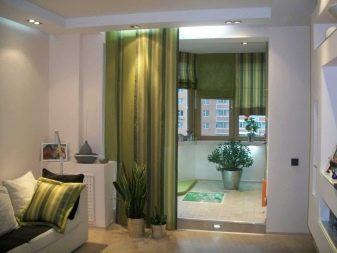
- Austrian curtains (curtain with draped scallops at the bottom and a direct panel at the top);
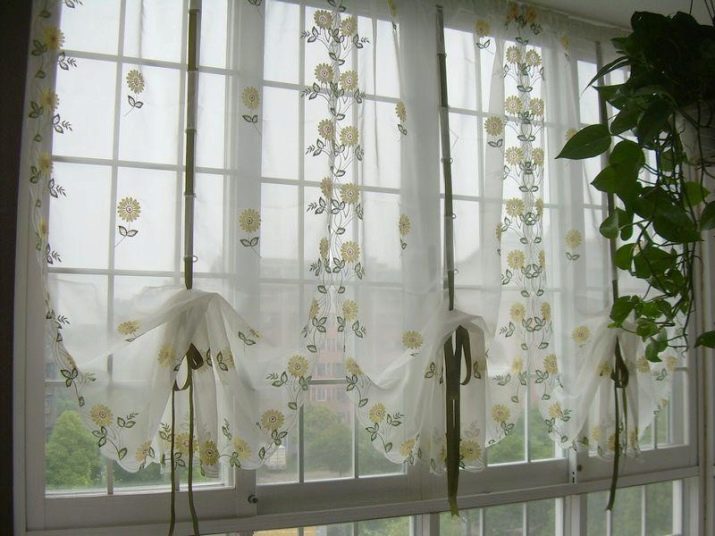
- french (panels draped along the entire length in the form of lush festoon draperies);

- London curtains (models with rare scallops, usually no more than three, which are only going to the bottom, and then not too magnificent);

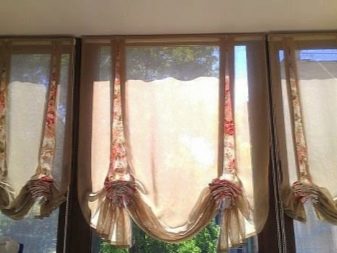
- roman patterns (modern curtains of a short length of a lifting type, gathering in folds of equal width and length);
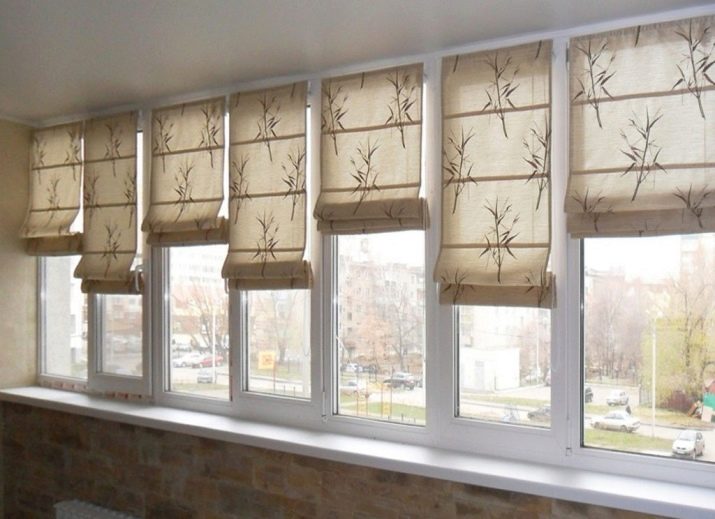
- rolshtor (models with a special transverse shaft, or even a cassette, in which the fabric hides when opening the window);
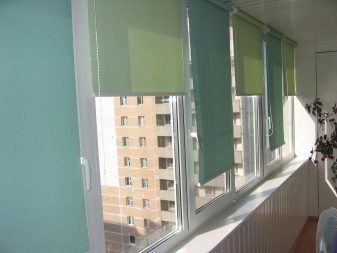
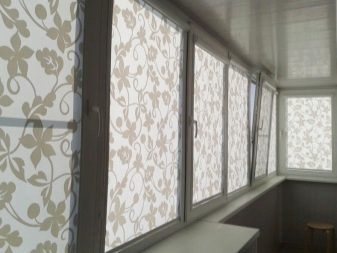
- pleated (curtains of short length, which can be opened both from top to bottom and from bottom to top, having a transformation mechanism according to the accordion principle);
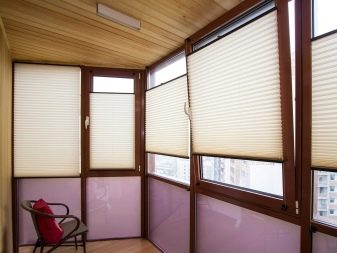
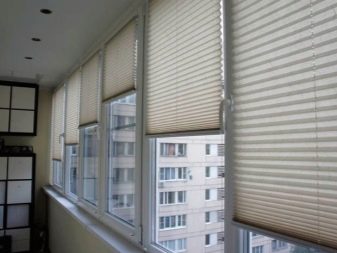
- stained glass curtains (which hang from glasses, forming certain curtain compositions);
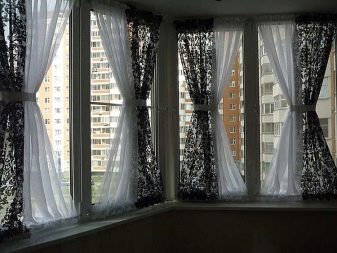

- cafe models (differing in not too long length and rectangular basis of the panels, not covering the window completely);
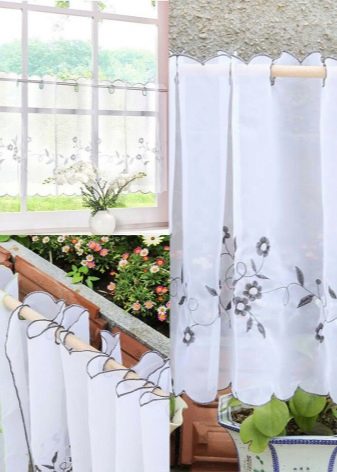
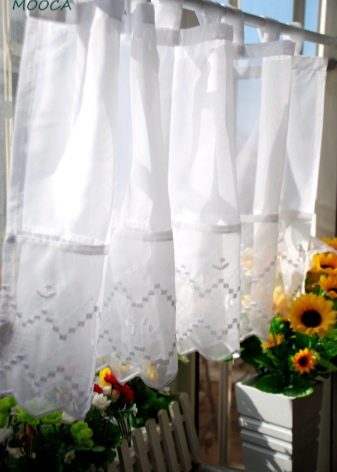
- unforgettable classics (ordinary rectangular cloths, which may have fastenings in the form of eyelets, loops or curtain tape).
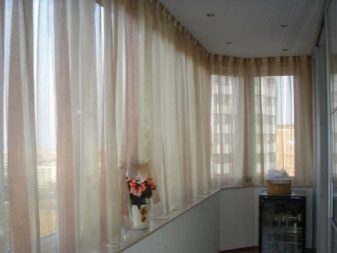
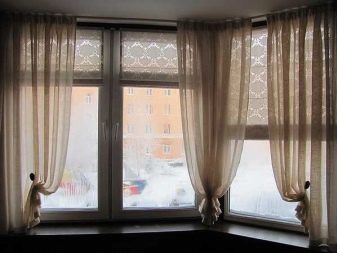
Materials
Modern tulle is made from different raw materials, fabrics can be completely natural, synthetic or mixed. In this case, the best type of curtains for a balcony are considered those made of blended fibers. Compared to natural ones, they are not so brands, are resistant to creasing, fading under the sun, are not afraid of shrinkage during the washing process.
According to fashion trends this season Priority materials with an unusual texture. The basis of "unusualness" may be the type of weave: it can combine threads of different thicknesses, textures and composition. This allows you to create, for example, a unique “rain” effect, which today is considered one of the most fashionable. Besides, in fashion tulle with low tide, for example: pearl, pearl, chameleon, changing the shade at different angles of the beholder.

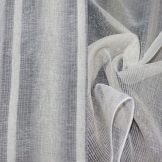
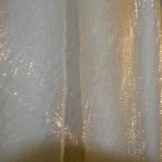
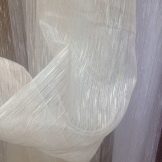
The fabric of tulle can be concise or elegant. Depending on what interior style will be chosen as the basis for the design of a room with an adjoining balcony (loggia), the choice can be made in favor of simple plain curtains or panels with an ombre effect. In addition, embroidered trim is in fashion (along the bottom of the tulle, throughout its entire area). Fashionable and products with beads, as well as sequins, curly edge at the bottom of the canvas.
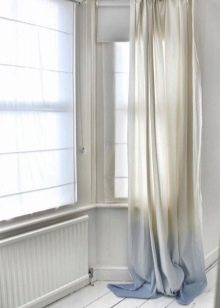
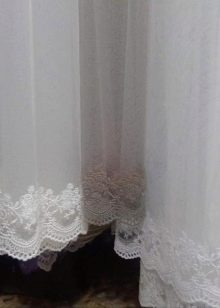

Organza this season is not as popular as mesh models, characterized by a sparse interweaving of threads, creating the effect of flax. Textures with knots are in fashion: this tulle is today considered one of the most spectacular and fresh. The veil today should be smart, however, if the style requires strict decisions, you will have to obey, choosing a model for a specific type of fastening.
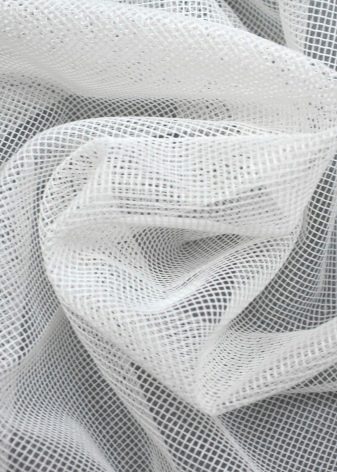
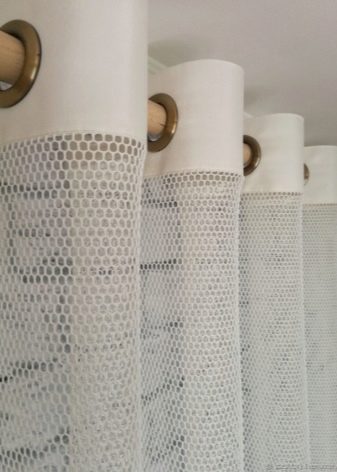
Colors and patterns
To design a balcony, you can take tulle in different colors: white, blue, pinkish, beige, milk, creamy. Ivory, peach, light apricot, bleached pistachio, cream are also in fashion. If a room with an adjoining balcony is flooded with sunbeams, you can buy tulle in a light turquoise, sunny or light purple hue to decorate balcony windows.
Not in fashion only plain curtains - products made from canvases in medium-sized stripes (both longitudinal and transverse), flowers, and cage are gaining popularity. Some people prefer prints with butterflies, leaves or branches of plants. On sale you can find models with ornate lace, monograms and damask patterns. As for flowers, meadow prints (for example, daisies) are in fashion today.
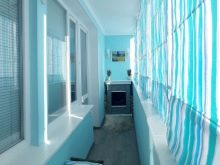
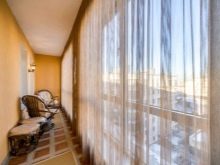
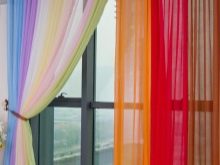
Nuances of style
Tulle in the interior of any room is able to indicate a certain stylistic idea. The same rule applies to models for loggias. Given that both balcony and room windows should be designed in the same style, the choice should be the right one. For example, if the basis of the style is minimalism, when buying panels you need to pay attention to their functionality and the absence of all that is superfluous.
In fact, these are simple translucent curtains on loops or tape. Matter can be matte or with a characteristic satin tint.
No unnecessary patterns: the textiles should be monophonic, its shape should be rectangular. Draperies are not necessary, however longitudinal folds are quite appropriate.

Tulle material for design areas such as country or provence, on the contrary, it should be printed, since it is drawings on the fabric that are the hallmark of these interior styles. As for the type of cut, the style can be, for example, classic on grommets, Roman or London, but not long. The appearance of tulle should give some rustic simplicity. Plant motifs, discreet cell or medium-sized strip are welcome.
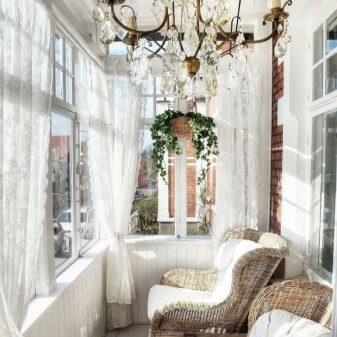

Classic interior design design need a special elegance. Of course, classic curtains look better on the windows of the balcony or loggia in the case when this part of the architecture is connected to the main room: these are Austrian, French, London models. Often, this tulle is combined with a contrast, which allows you to add a special mood to the interior design.
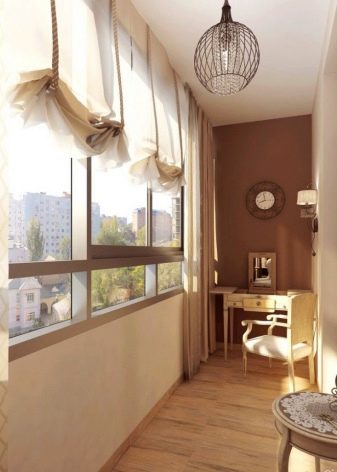
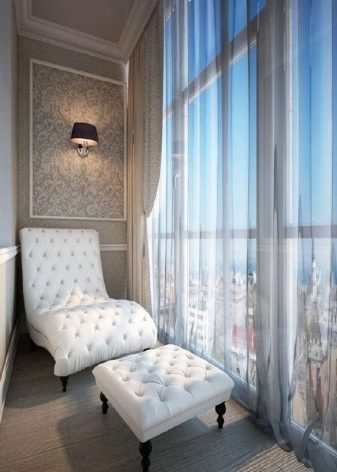
How to choose and place?
Choosing the option of tulle for your balcony, you need to consider a number of nuances. For example, it can be continuous or separate for each section. As a rule, you will have to open the windows of the balcony to ventilate the room, and therefore, a continuous panel may not seem the most convenient to use.
- Products are bought taking into account approximate sizes, having measured the window frames of the balcony (loggia) before purchasing.
- The color of the panels is selected to match the general background design of the interior.
- If frequent folds are conceived, the width of the panel on the window is doubled.
- If the room has a lot of small details, try to take monophonic tulle curtains.
- If the balcony or loggia is connected to the room, take styles so long that it does not interfere with the furniture installed near the windows.
- If a working area is organized on the loggia, try to take products that will not steal too much light.
- The fabric of the tulle must match the status of the interior of the nearby room. Cheap does not look harmonious against the background of the expensive.
When buying, consider practicality. If there is furniture in the combined room near the windows, it is not practical to take a tulle with loose weaving of threads.
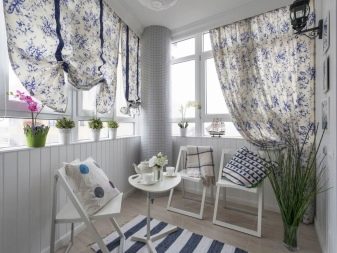
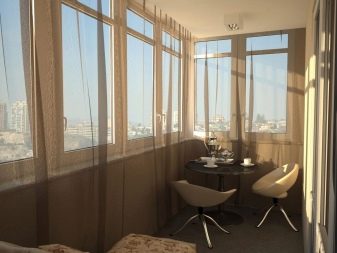
You can hang tulle curtains on the windows of a balcony or loggia beautifully in several ways, for example:
- usually not picking up with pickups;
- using hooks and forming with their help the shape of the top of the hourglass;
- stained glass (hourglass), connecting in the center with ribbons, bows, garters;
- having assembled a single cloth into the folds, and having decorated the bottom with scallops, pulling up the length of the cloth using sewn ropes;
- creating a curtain arched composition using Austrian-type tulle;
- using models with shafts for each window, decorating them with ribbons at the bottom;
- alternating monophonic and color panels, using stained-glass models or products with lower fastening to the frame;
- collecting the panel in the center in a semicircle, using this technique on separate curtains for each window.


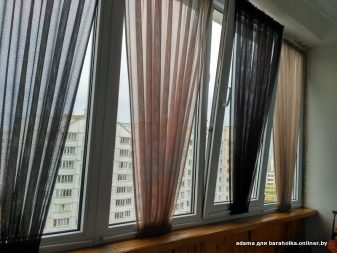
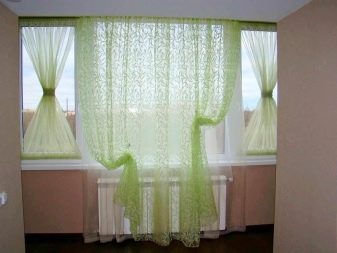
Using designer tricks for curtain decoration (for example, in the form of stylized figures).
See how to pull a string and hang a tulle on the loggias in the next video.
